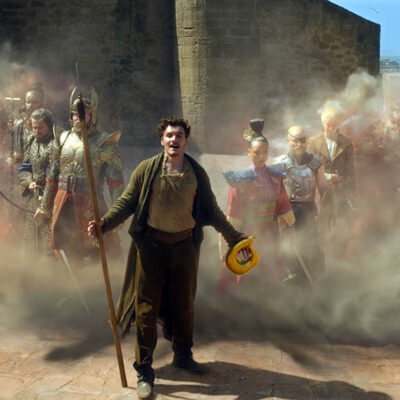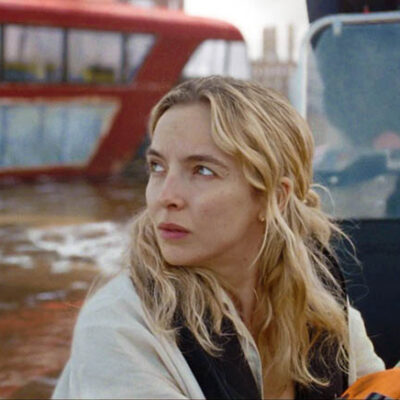The afterlife scenes featured a degree of stylization with respect to skies and colors but, again, this required a touch that would not distract from the story. “With the episodes that followed, there was a lot of new stuff to come up with, in terms of phenomena unique to Lakeview and other afterlife options, so we brought on our own concept artist while working with production’s in-house art department,” Krasser reveals. “With Upload, you don’t immediately think ‘visual effects extravaganza,’ but there’s a lot of work, from the holographic telephone displays to the little glitches and the rezzing-up as characters come and go from their venue.”
One story point required VFX to generate an extremely low-rez version of their main character. “When we see him transformed into low-poly mode, that was very challenging,” admits Krasser. “If you go back to the early days of computer graphics, there was the music video of Dire Straits’ ‘Money for Nothing’ – which, by the way, was one of my early inspirations for getting into the business. Once Greg selected from among our presented options, it became a matter of how we were going to animate a mouth on these blocky features. The actors were physically shot, so we used that as our guide, painting them out while retaining appropriate characteristics of each performer.
“Then there was what we called the blue room, where Nathan went Heaven-shopping, choosing what options he had outside of Lakeview. That was 12 pages of dialog with 120 shots. To help us stay within budget while accommodating such a volume of work, Greg actually built and photographed a tiny greenscreen set with dolls, comping it with various backgrounds. Production built two versions of the room right next to each other on stage. On one, every object inside was painted blue, while the other looked normal. We put green tape on the edges of the furniture in the blue room so we’d be able to treat those extractions differently from the ones used for the wall backgrounds, letting the viewer see a difference in the geometries when we put various backgrounds over the scene.”
The VFX shot load for the first season of ten episodes came to 1,400, with most of the work done by in Vancouver – though some, including the mouth replacements for a talking dog/therapist, were handled in the Los Angeles office. “You do get a greater sense of consistency when having VFX all under one roof,” Krasser maintains. “Though production did have a small in-house group of artists doing work that didn’t require a great level of expertise or our firepower. We were all constantly trying to find the most efficient solution while delivering the proper spectacle and humor. It was about a year from our initial talks till when we made final deliveries.”
With work now all being done remotely, Krasser finds himself seriously missing the face-to-face aspect of the review process. “Nowadays, with the new to-be-determined paradigm owing to COVID, how will we shoot things on set?” he wonders. “How will we approach crowd scenes? Do we only shoot with X number of extras and fill in the rest with 3D? I think you’re going to see some shifts in the way things get done. And VFX will be there more often to help tell the story completely and safely. And I think the effects world is more than happy to step up and fill that vacuum. We want to help the filmmakers tell the story and do so safely. I think that’s what the future looks like for all of us.”


























